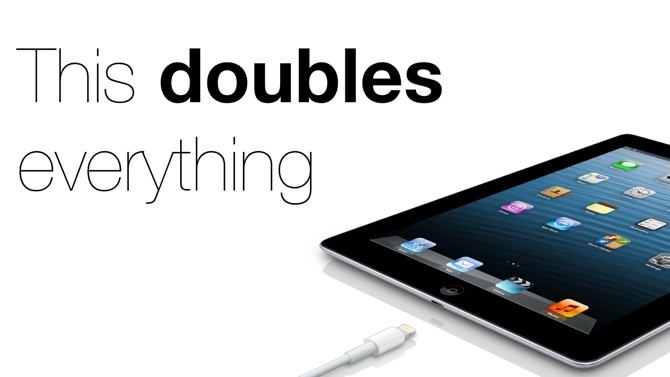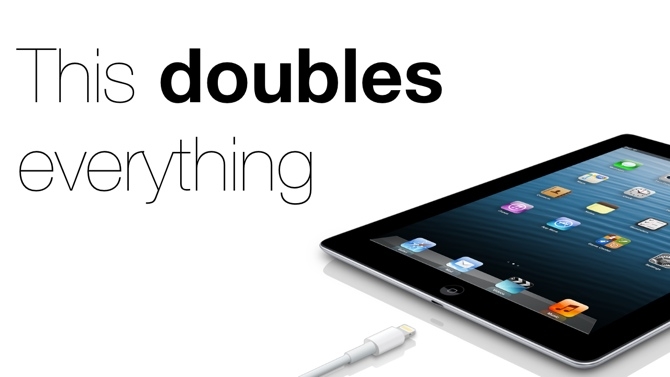
 This doubles everything + 4Gen iPad
This doubles everything + 4Gen iPad
RedShark is the first online publication that has as part of its core philosophy the idea that technology is doubling in capability every year or so. There's nothing new about this idea. Moore's law was built around it in 1965, and Raymond Kurzweil wrote his seminal work on the exponential growth of technology "The Singularity is Near" in 2005 - and it is still uncannily accurate in predicting trends.
What is new is that we will give this idea the prominence it deserves.
As we said in this RedShark piece, if you don't understand it, then every decision you make about your technological future will either be short-term or wrong.
But not even we were prepared for what some people - missing the point entirely - are describing as a "minor upgrade" to the full-size iPad.
This supposedly incremental boost to the product actually doubles its CPU and graphics processing power - just seven months after the launch of the previous model. Quite obviously this doesn't mean that we're going to see future upgrades every seven months with similar leaps in processing speed, but the fact that this happened in such a short period after the previous model is simply staggering.
Commercial reasons for speed
There were commercial reasons for it. With the introduction of the "Lightning" interface for peripherals, charging and sync on the iPhone 5, Apple had to bring the iPads in-line with this new "standard" quickly. And the introduction of the Retina screen on what most people still call the iPad 3 (itself a good example of Doubling, or, strictly, quadrupling) meant that the 1st generation Retina iPad's processor was stretched to keep all those pixels up to date.
The new A6X processor in the latest iPad restores and improves the performance of the tablet. And perhaps Apple wanted to put even more distance between themselves and the competitors, who now seem to understand the tablet race better than before, building products that don't compete directly with the iPad but which seek to establish their own niches, often built around content ecosystems.
Double the camera
Apple is not the only example of obvious doubling. Last week we reported on the new Hero 3 camera which GoPro says, quite simply, is double the previous camera, in just about every respect. What's happening isn't miraculous. It's an inevitable consequence of the fact that we are able to cram more and more processing power into the same space - and for less money. We are able to do this because each generation of technology results I'm better tools to build the next generation with.
With processors, smaller parts mean more cores. You can add more cores without any fundamental advance in processor design. But processor design is advancing anyway, so what you get is more, better cores. Sometimes, the cores are so much better that new dual core processors (like the one in Samsung's new Exynos 5250-based ChromeBook) are faster than some previous-generation quad core chips - so quad core versions of them will be still more powerful.
The rise of digtal cameras
And just look at cameras. The first digital cameras were so bad that if you took a picture of a horse it was hard to see if it was actually a horse or a Volkswagen camper van. Around 2004, Canon released the EOS 300D, which had six megapixels. Now, you can buy compact, mirrorless cameras with interchangeable lenses that have 26 megapixels. Remember, 4K video is only 8 megapixels. In the space of little more than fifteen years digital imaging has gone from being a mere curiosity for early adopters and geeks, to replacing film, completely.
So what's going to happen in the next 15 years?
Actually, looking even beyond the next seven months is complete guesswork.
Tags: Technology


Comments